Tying the zeppelin knots
The zeppelin bend is a good knot for joining two ropes together. The zeppelin loop is a good knot for making a fixed loop. This is how I tie them.
Zeppelin bend
This bend won’t slip or shake loose, ever. It reduces the breaking strength of a rope by only 25%. And it remains easy to untie after being subjected to an extreme load, although not while loaded. To tie it:
-
Take one end of each rope, and drape them over your index finger as illustrated.
-
Take the end of the left rope under its standing part, over and under the end of the right rope, then back under itself to form an overhand knot around both ropes.
-
Take the end of the right rope around behind the index finger and _under both ropes to form another overhand knot around them.
-
Pull the standing parts, then the ends.
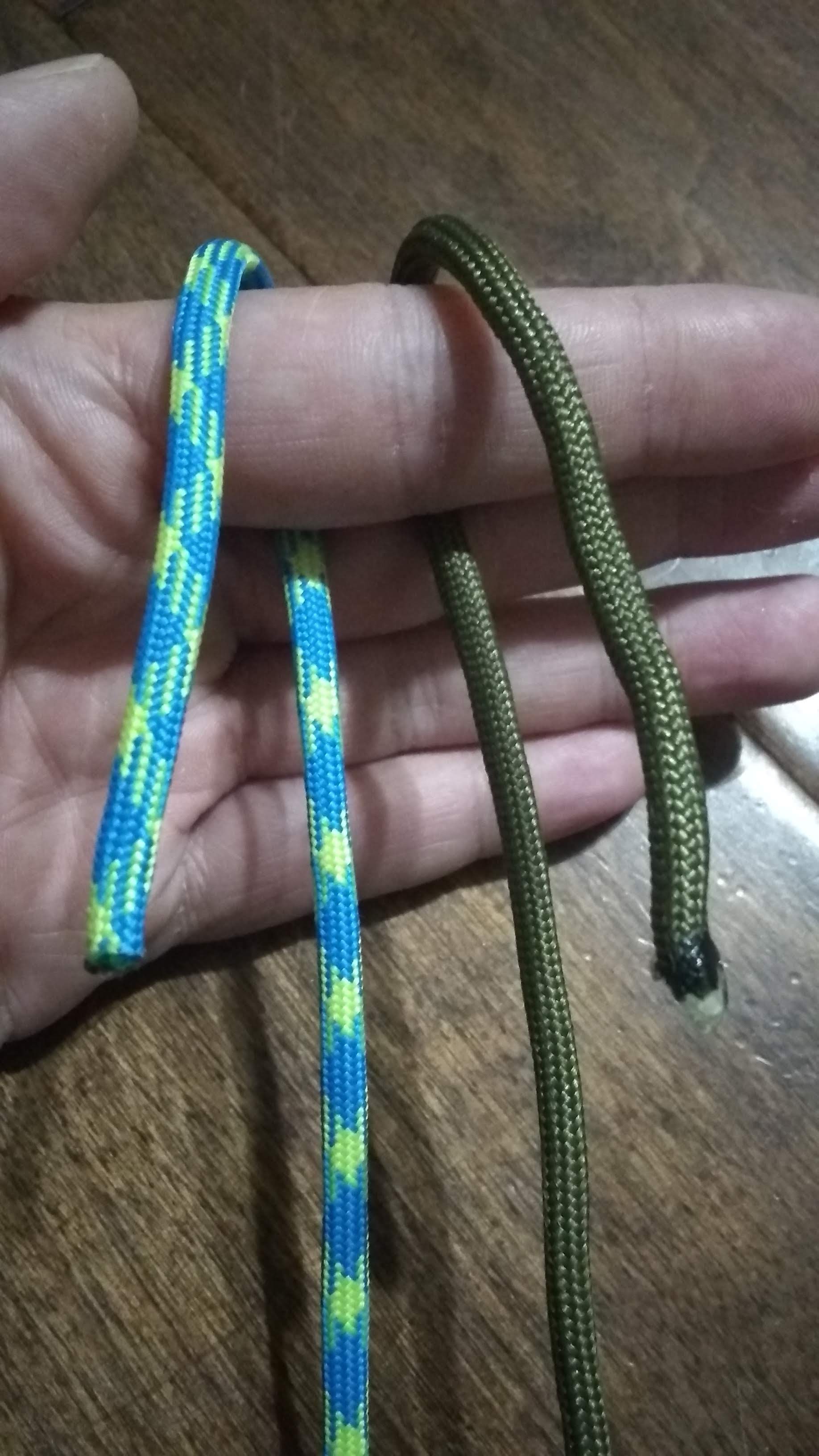
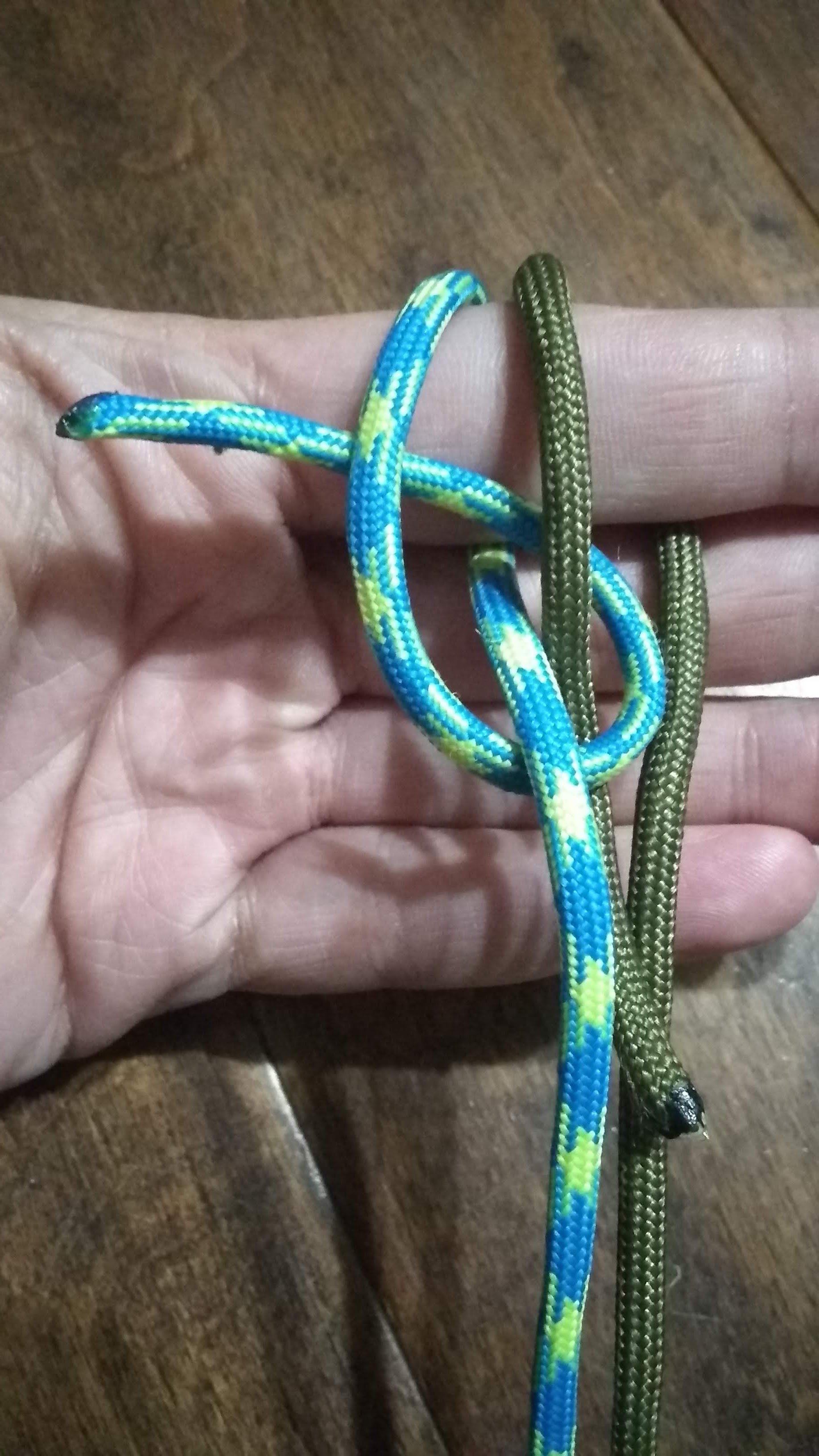
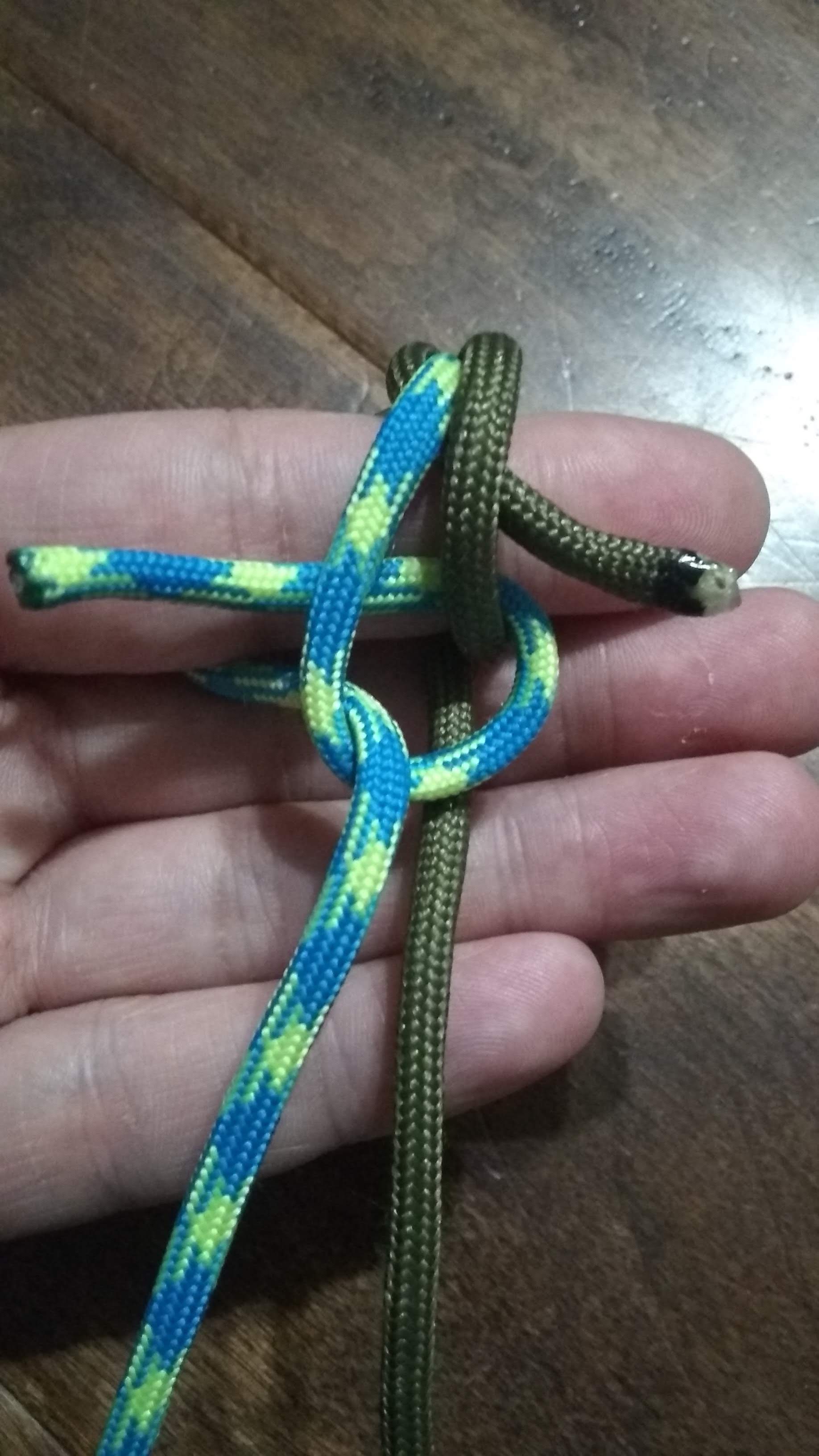
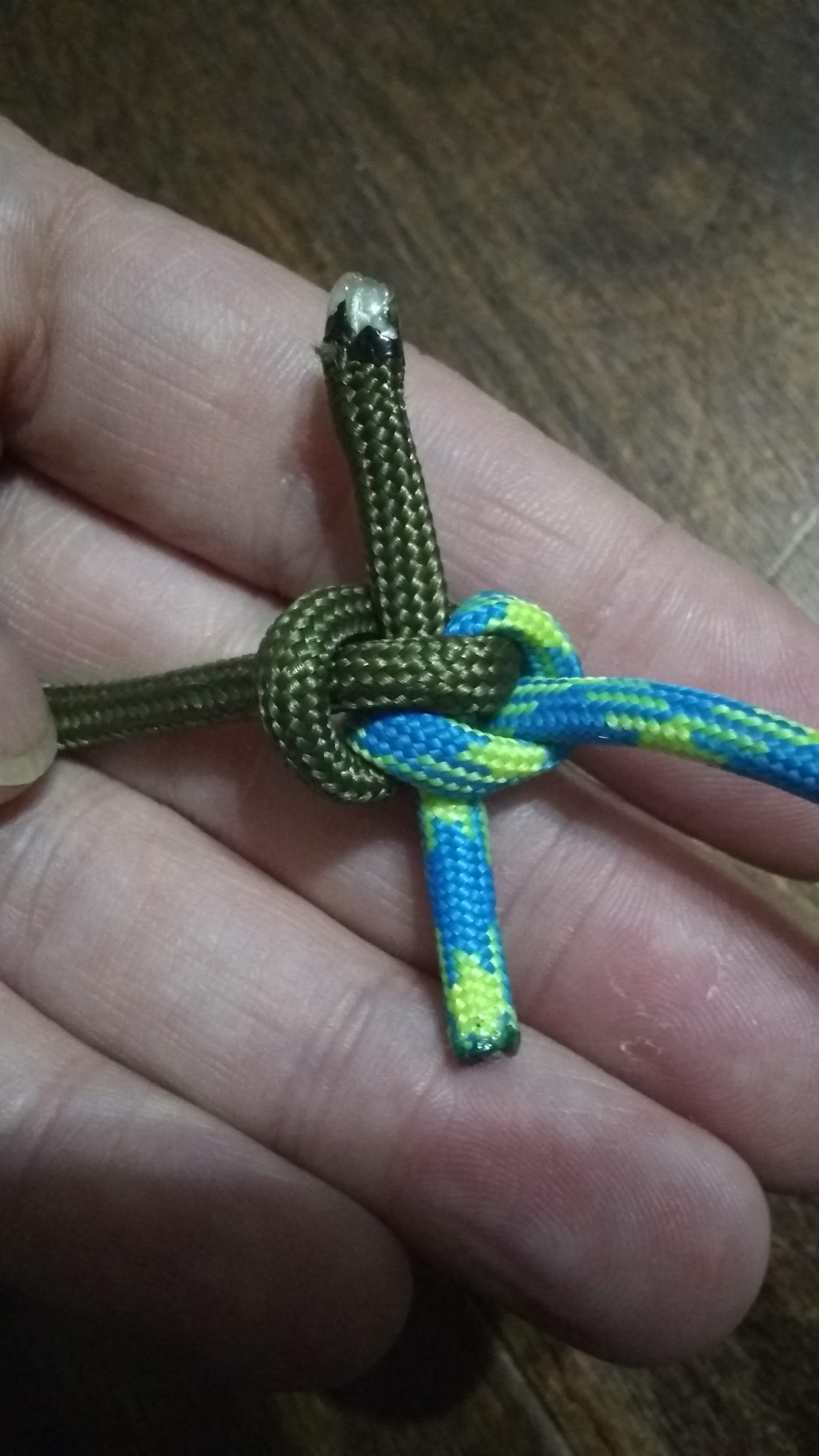 Zeppelin bend in four steps
Zeppelin bend in four steps
For contrast, consider that the sheetbend reduces a rope’s breaking strength by a whopping 55% and that in synthetic rope it slips before even reaching that limit. I recently tested the security of the zeppelin bend, the sheetbend, and six other bends. See how they compare.
Zeppelin loop
This fixed loop knot shares the zeppelin bend’s excellent qualities. To tie it:
-
Tie an overhand knot some distance from the end of the rope, then pass the end around an object (optionally) and back through the far opening in the overhand knot as illustrated.
-
Pass the end through the loop as illustrated.
-
Pass the end through the near opening in the overhand knot as illustrated and under its own standing part.
-
Pull the standing part, then pull the end.
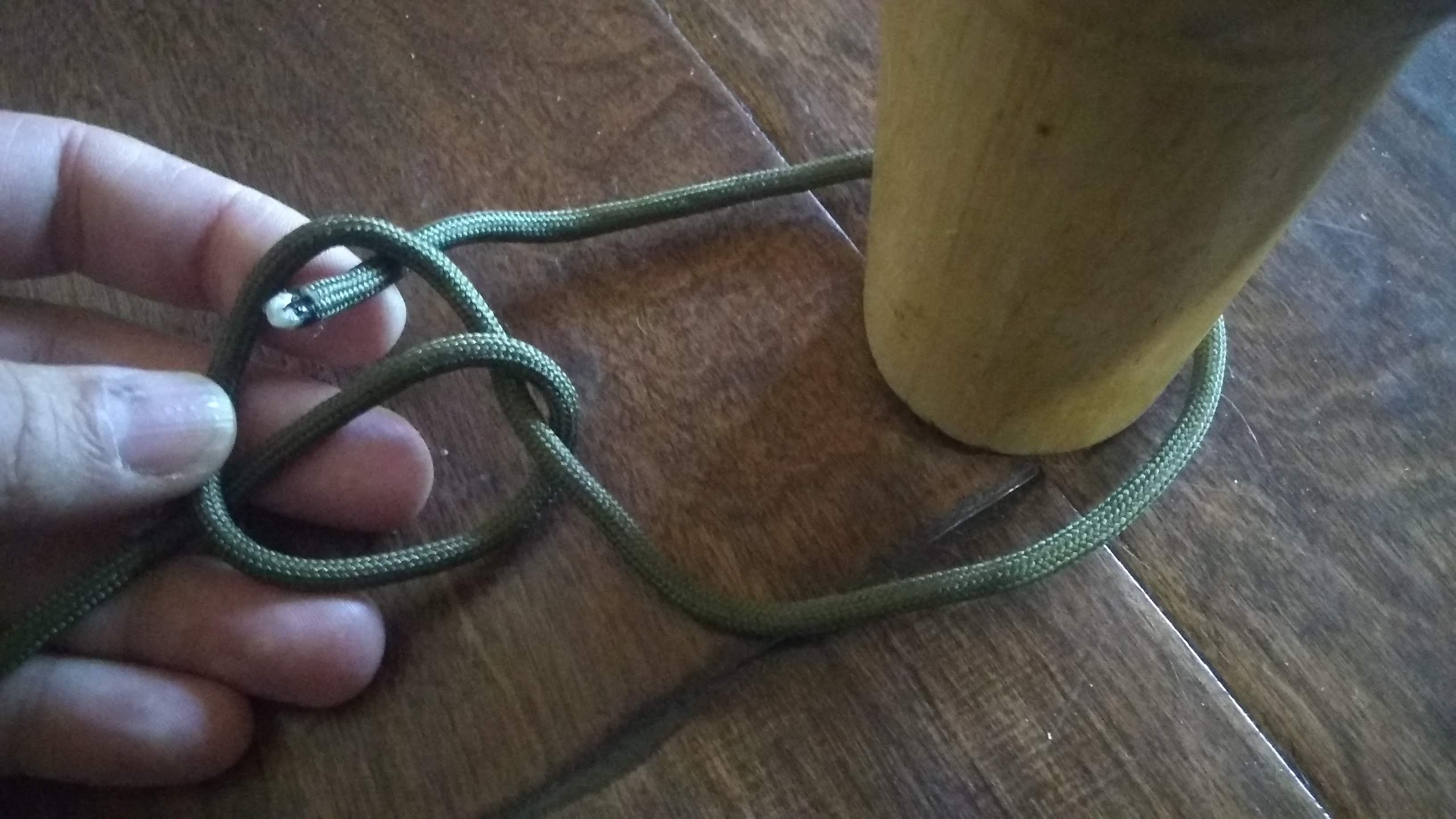
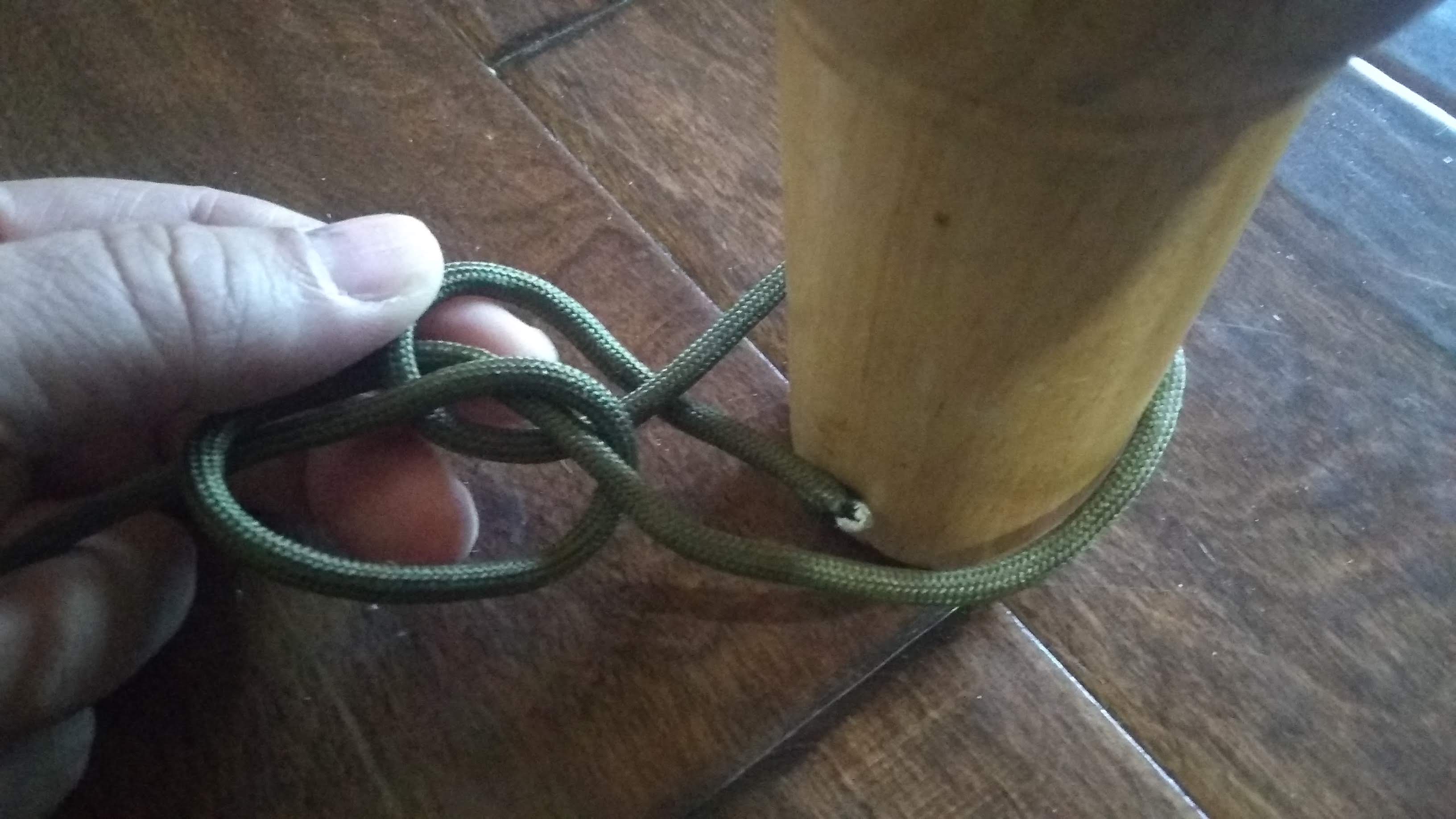
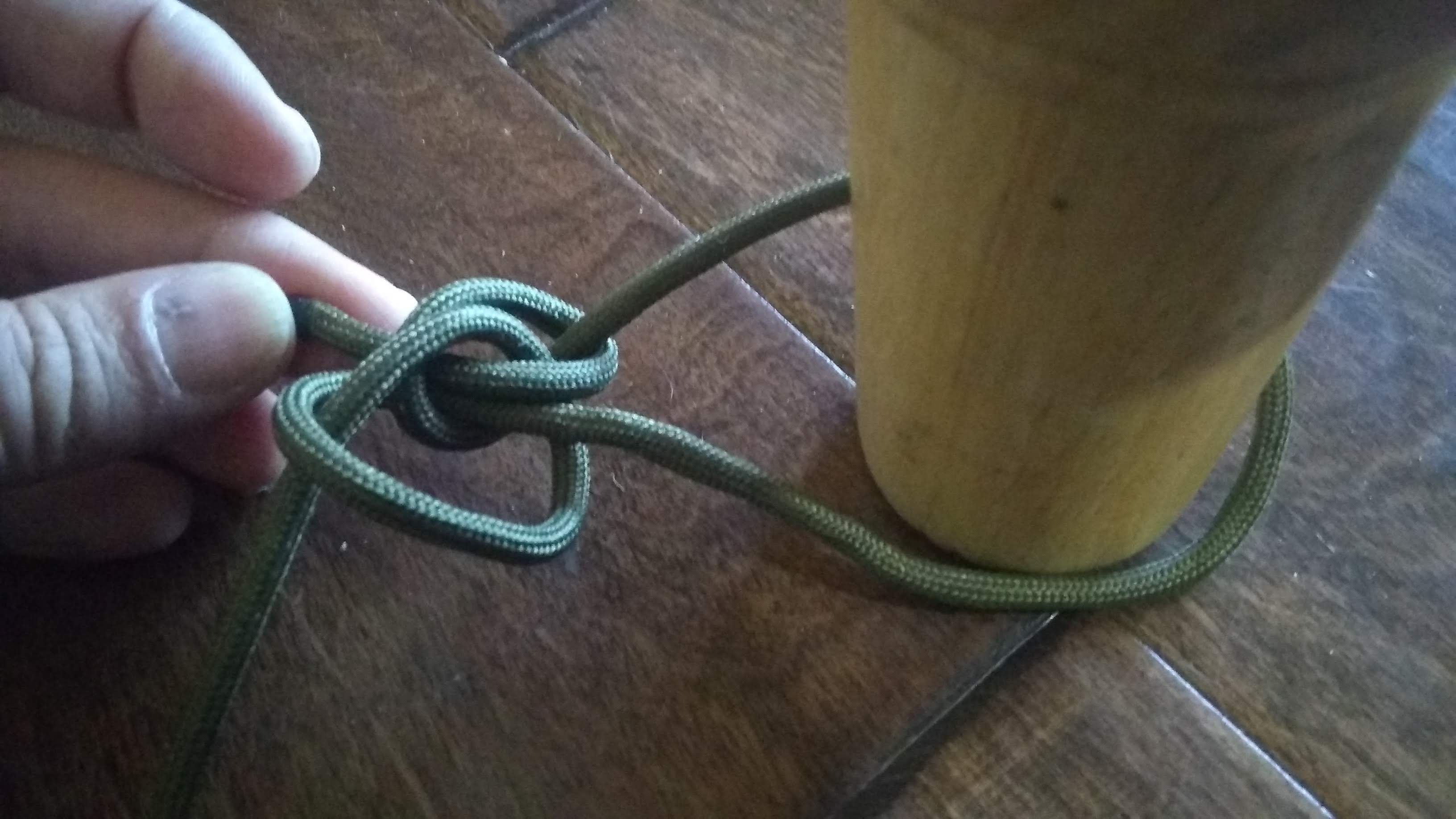
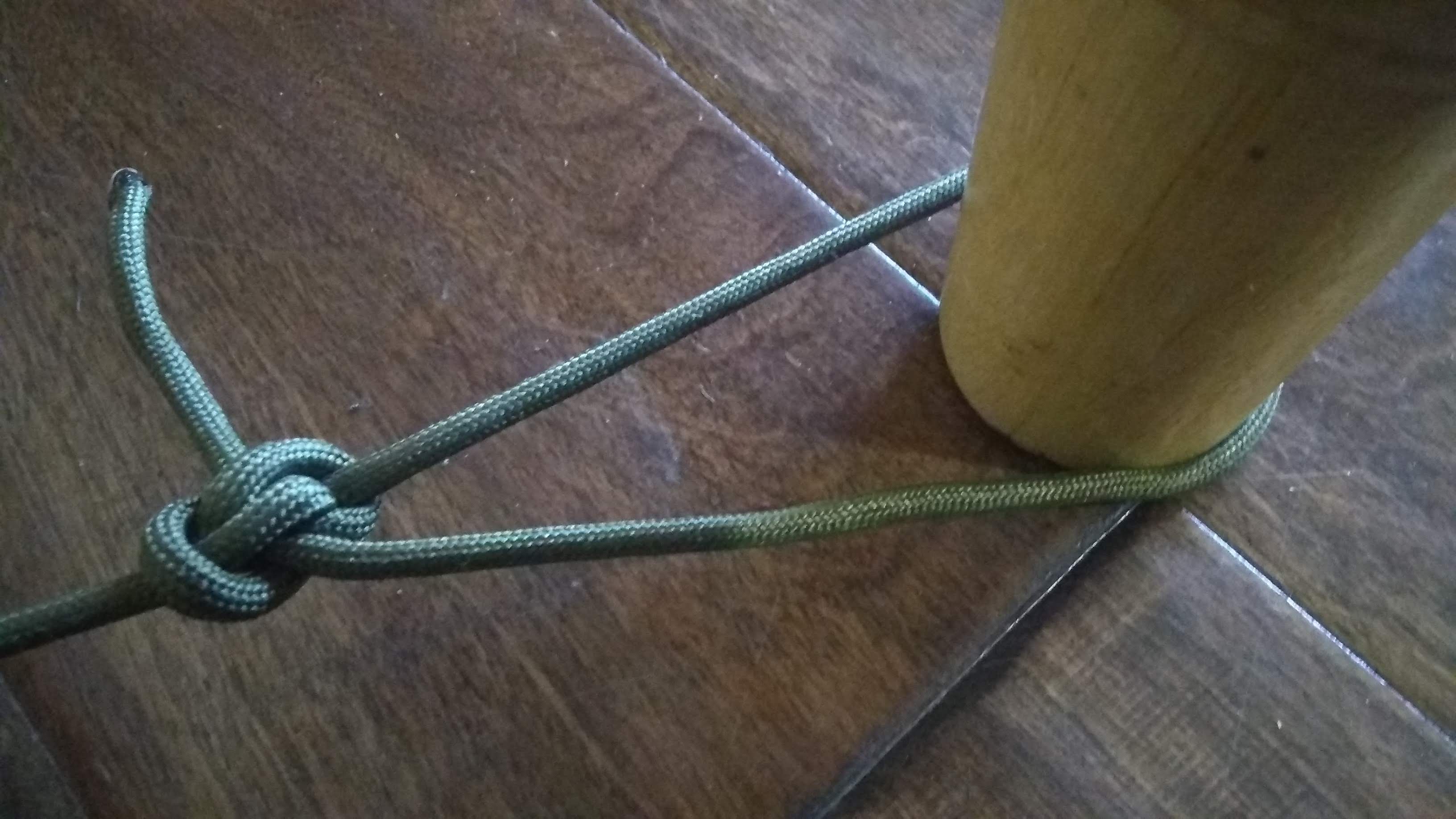
A worthy alternative to the mediocre bowline loop, the zeppelin loop is derived from the zeppelin bend in the same way that the bowline is derived from the sheetbend.